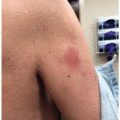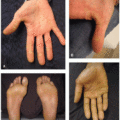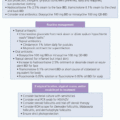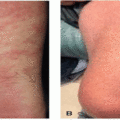Radiation Therapy
Beth McLellan
ACUTE RADIATION DERMATITIS
Acute radiation dermatitis (RD) occurs within 90 days after radiation therapy (RT). It is most common among patients with breast, head and neck, skin, and lung cancers due to higher radiation doses and those receiving concomitant chemotherapy. Clinical signs include erythema, xerosis, hair loss, hyperpigmentation, dry or moist desquamation, and possible bullae formation (Figure 43.1). Acute RD may be complicated by secondary infection, leading to the need for treatment interruption and topical or culture-based systemic antimicrobials.
Diagnosis is clinically based on supporting history. The severity of acute RD can be graded using the CTCAE scale in Table 43.1.1,2
CHRONIC RADIATION DERMATITIS
Chronic RD occurs more than 90 days after RT. Patients can present with epidermal thinning, dermal atrophy, fibrosis, telangiectasia, edema, dyspigmentation, and dermal necrosis with ulceration (Figure 43.2). Patients have an increased risk of developing basal cell carcinomas, squamous cell carcinomas, and keratoacanthomas in the areas of damage years after RT.
Stay updated, free articles. Join our Telegram channel

Full access? Get Clinical Tree







